The History Of Lexus

Lexus (Japanese: レクサス,, Rekusasu?) is the luxury vehicle division of Japanese automaker Toyota Motor Corporation. First introduced in the United States, where Lexus has become the highest-selling make of luxury car, today Lexus brand name vehicles are available throughout the world. In 2005, the Lexus marque launched in Japan, marking the continued global expansion of the luxury division.
Lexus originated from a clandestine flagship sedan project that began in 1983. This effort developed into the original Lexus LS, which was the first vehicle to wear the Lexus marque upon its launch in 1989. In subsequent years, Lexus added sedan, coupe, and SUV models. Hybrid drivetrains arrived in 2005, and the F marque performance division debuted in 2007. From the start of production, Lexus vehicles have been consistently produced in Japan, with manufacturing centered in the Chūbu and Kyūshū regions. Assembly of the first Lexus built outside the country, the Ontario, Canada-produced RX, began in 2003.
Since 1989, Lexus has developed a reputation for vehicle reliability and customer service, as measured by independent surveys. In 2008, consumer ratings firm J.D. Power and Associates named Lexus the most reliable brand in the U.S. for the fourteenth year, based on its Vehicle Dependability Survey, a measure of over 53,000 vehicle owners and problems experienced in the first three years of vehicle ownership. Through 2008, Consumer Reports has also named Lexus among the top five most reliable brands in its Annual Car Reliability Surveys of over one million vehicles across the U.S.
The Lexus slogan is The Pursuit of Perfection.
The F1 project
In 1983, Toyota chairman Eiji Toyoda summoned a secret meeting of company executives, to whom he posed the question, “Can we create a luxury vehicle to challenge the world's best?” This question prompted Toyota to embark on a top-secret project, code-named F1 (“Flagship” + “No. 1 vehicle”). The F1 project, whose finished product was ultimately the Lexus LS 400, aimed to develop a luxury car that would expand Toyota’s product line, giving it a foothold in the premium segment and offering both longtime and new customers an upmarket product. The F1 project followed the success of the Toyota Supra sports car and the luxury Toyota Cressida models. Both the Supra and Cressida were rear-wheel drive cars with a powerful 7M-GE/ 7M-GTE engine. The U.S. launch of the Acura marque by Honda three years prior also influenced Toyota in its plans for a luxury division. Around this same time, Nissan would unveil plans to create its own luxury division, Infiniti, while Mazda also considered developing a luxury division, to be called Amati.
Toyota researchers visited the U.S. in May 1985 to conduct focus groups and market research on luxury consumers. That summer, several F1 designers rented a home in Laguna Beach, California to observe the lifestyles and tastes of American upper-class consumers. Toyota’s market research concluded that a separate brand and sales channel were needed to present its new luxury flagship, and plans were made to develop a new network of dealerships in the U.S. market.
Brand development
In 1986, Toyota’s longtime advertising agency Saatchi & Saatchi formed a specialized unit, Team One, to handle marketing for the new luxury brand. Image consulting firm Lippincott & Margulies was hired to develop a list of 219 prospective names; Vectre, Verone, Chaparel, Calibre, and Alexis were chosen as top candidates. While Alexis quickly became the front runner (also associated with the Alexis Carrington character on the popular 1980s primetime drama Dynasty) and later morphed to Lexus, the name has been attributed to the combination of the words "luxury" and "elegance," and another theory claims it is an acronym for "luxury exports to the U.S." According to Team One interviews, the name has no specific meaning and simply denotes a luxurious and technological image.
Just prior to the release of the first vehicles, database service LexisNexis obtained a temporary injunction forbidding the name Lexus from being used as they stated it might cause confusion. Upon reflection, the court lifted the injunction, deciding that there was little likelihood of confusion between the two products.
The original Lexus slogan, developed after Team One representatives visited Lexus designers in Japan and noted their obsessive attention to detail, became "The Relentless Pursuit of Perfection."
The Lexus logo was developed by Molly Designs and Hunter Communications. The final design for the Lexus logo featured a stylized “L” within an oval, and according to Toyota, was rendered using a precise mathematical formula. The first teaser ads featuring the Lexus name and logo, designed by Team One, appeared at the Chicago, Los Angeles, and New York auto shows in 1988.
Launch
In 1989, after an extended development process involving 60 designers, 24 engineering teams, 1,400 engineers, 2,300 technicians, 220 support workers, around 450 prototypes, and over $1-billion in costs, the F1 project was completed. The resulting flagship, the Lexus LS 400, had a unique design that shared no major elements with previous Toyota vehicles, with a new 4.0 L V8 gasoline engine and rear-wheel drive. Testing locations for the LS 400 included the German autobahn.
The LS 400 debuted in January 1989 at the North American International Auto Show in Detroit. The following September, Lexus vehicles officially went on sale at a network of 81 new Lexus dealerships across the U.S. The LS 400 was sold along with a smaller sibling, the Toyota Camry-based ES 250. The launch of Lexus was heralded by a multimillion dollar advertising campaign in both television and print media. Lexus subsequently began exports to the United Kingdom, Switzerland, Canada, and Australia, starting in 1990.
The LS 400 was widely praised for its quietness, well-appointed and ergonomic interior, engine performance, build quality, aerodynamics, fuel economy, and value, though it was criticized by some automobile columnists for derivative styling and a suspension regarded as too compromising of handling for ride comfort. The LS 400 debuted at $38,000 in the U.S. (in some markets, it was priced against midsize six-cylinder Mercedes-Benz and BMW models) and was rated by Car and Driver magazine as better than both the $63,000 Mercedes-Benz 420 SEL and the $55,000 BMW 735i in terms of ride, handling, and performance. It was generally regarded as a major shock to the European marques; BMW's and Mercedes-Benz's U.S. sales figures dropped 29% and 19%, respectively, with then-BMW chairman Eberhard von Kuenheim accusing Lexus of dumping in that market. The LS 400 also won several major motoring awards when released.
In 1990, during its first full year of sales, Lexus sold 63,594 LS 400 and ES 250 sedans in the U.S., the vast majority being the LS model. By 1991, sales had increased to 71,206 cars in the U.S. market, making Lexus the country's top-selling luxury import. That same year, Lexus earned first place in J.D. Power’s studies on initial vehicle quality, customer satisfaction, and sales satisfaction.
Growth and expansion
Lexus introduced two new models in June and September 1991, the SC 400 coupe and ES 300 sedan. The SC 400 (designed in tandem with the Japanese-market Toyota Soarer) shared the LS 400’s V8 engine and rear-wheel drive design, while the ES 300 replaced the ES 250 and became Lexus’ best-selling sedan. The GS series came to America in 1993, based on the Toyota Aristo, which had sold for two years prior in Japan. In 1994, Lexus introduced the second-generation LS 400, a complete redesign of the flagship model.
In 1996, Lexus added its first luxury sport utility vehicle, the LX 450. Two years later, Lexus debuted the first luxury crossover SUV, the RX 300; the second generation of the GS 300/ GS 400 sedans; and a new entry-level sedan, the IS 300. The RX quickly became Lexus' best-selling model, displacing the ES, its previous best-seller. In 1999, Lexus recorded its one-millionth vehicle sold in the U.S. market, and was ranked the top-selling luxury automobile make in the United States overall. In 2001, Lexus introduced its first convertible, the SC 430, and the third-generation LS 430.
In 2005, Lexus expanded its lineup with the debut of the world’s first hybrid luxury SUV, the RX 400h. The vehicle's Lexus Hybrid Drive system combined gasoline and electric motors for increased power, improved fuel efficiency, and lower emissions relative to traditional gas-powered equivalents. In 2006, Lexus unveiled the GS 450h, a performance hybrid sedan with a V6 gas/ electric power train and rear-wheel drive.
In 2006, Lexus premiered the fourth-generation flagship LS Series—comprising both standard- and long-wheelbase gasoline (LS 460 and LS 460 L) and hybrid versions (LS 600h and LS 600h L)—and adding its automated parallel/ reverse parking feature. In 2007, the LS 600h L went on sale as the most expensive luxury vehicle ever produced in Japan, with a sticker price of approximately $125,000.
In January 2007, Lexus announced a new F marque performance division, which would produce racing-inspired versions of its luxury performance vehicles. The first of this line, the Lexus IS F, made its debut at the 2007 North American International Auto Show, accompanied by an exotic supercar concept, the LF-A.
By 2006, Lexus sold approximately 475,000 vehicles worldwide and entered Interbrand's list of the Top 100 Global Brands for the first time, with an estimated brand value of approximately $3 billion annually. In 2007, Lexus' annual U.S. sales had risen to 329,177 vehicles. In 2008, amidst the global financial crisis, sales dropped 21% in the U.S., with an annual total of 260,087. In terms of volume, Lexus was the number-one-selling luxury marque in the largest automotive market for the past eight years consecutively and the fourth-largest luxury car brand in the world by volume.
Global development
In 2005, Lexus completed a full organizational separation from parent company Toyota, with dedicated Lexus design, engineering, training, and manufacturing centers working exclusively for the luxury division. This effort coincided with the launch of Lexus in its home market of Japan and an expanded global launch of the brand in major world markets. Executives aimed to grow Lexus sales outside of the U.S. (U.S. sales comprised approximately 63.5% of global Lexus sales in 2007). The next-generation IS, GS, and LS sedans were subsequently designed as "global models" for worldwide markets. Lexus launched in China in 2005, Malaysia in 2006, Indonesia in 2007, and the Philippines in 2008. By 2007, Lexus was sold in 57 countries around the world.
Total worldwide Lexus sales reached 500,000 vehicles in 2007. That year, the largest Lexus sales markets (in order of size) were the U.S., Japan, the UK, China, Canada, and Russia. In 2008, sales growth was limited by a weakened luxury car market in major world regions, including North America, Asia, and Europe.
Japan
Lexus' arrival in the Japanese market on July 26, 2005 marked the first introduction of a Japanese luxury marque in the domestic market. The compact IS sedans, convertible SC, and midsize GS sedans became available in Japan in the 2006 model year. Sales were initially slower than expected but increased in 2007. In particular, the introduction of the LS 460 in September 2006 led to over 12,000 orders in its first month—several times expectations. Lexus Japan's network of 143 new dealerships became profitable in 2007. The debut of Lexus in Japan ended domestic sales of previous generation Toyota-equivalent models; right-hand drive versions of the LS, SC, RX, IS, and GS were previously sold in Japan under the (Toyota) Celsior, Soarer, Harrier, Altezza, and Aristo names, respectively. With new-generation models, the Celsior, Aristo, Harrier, Altezza, and Soarer names were no longer used and were realigned to Japanese Lexus stores. The dramatic price increase (from $10,000 and up) on models previously sold under the Toyota badge and shifted to Lexus with the next generation was considered a main reason for initial slow Japanese sales, along with the overall contraction of the domestic auto market.
Europe
In the European market, Lexus has long struggled with smaller brand recognition; perceived lack of prestige compared to Mercedes-Benz, BMW, Porsche, and Jaguar; minor market share; and the absence of an independent dealership network. In 2005, Lexus announced plans to introduce its first hybrid and diesel vehicles and expand the number of dedicated dealerships. In 2006, the newly introduced diesel IS 220d mainly accounted for sales increases in the United Kingdom; hybrids accounted for a quarter of total sales and outsold their petrol counterparts. The London congestion charge has added incentive by excluding hybrid vehicles. In 2006, 80% of all RX models sold in Europe were of the hybrid model. Total Lexus Europe sales increased 72% in 2006 to over 50,000 vehicles, held flat in 2007, and started dropping in 2008.
Russia and China
In 2007, Lexus vehicles in the emerging markets of Russia and China saw high demand, with higher per-dealership sales than any other market. That year, Lexus ranked fourth in Russian luxury sales and also captured the import sales lead in the emerging Chinese luxury car market. The number of Lexus dealerships in China expanded from 12 in 2005 to 23 in 2007; increased demand for luxury SUVs contributed to sales growth in the Chinese market.
Asia and Oceania
In South Korea, with sales of the ES spearheading its efforts, Lexus was ranked as the top-selling import in 2005; in Taiwan, Lexus also became the top-selling luxury import in 2005. In Australia, Lexus experienced high sales growth and ranked third in 2006 luxury import sales, with the IS model generating the greatest demand.
As of 2008, coordination of global Lexus Division product strategy involves Kiyotaka Ise, general manager of the Lexus Development Center in Japan. Ise, a managing officer in Toyota Motor Corporation's executive leadership, succeeded previous head Takeshi Yoshida, who was promoted to senior managing director on the Toyota board in June 2007. Other Lexus Japan executives include Yoichiro Ichimaru (senior managing director of Lexus Japan Sales & Marketing) and Toshio Furutani, managing officer at the Lexus Product & Marketing Planning Division.
In the United States, Lexus operations are headed by Mark Templin, group vice president and general manager of the U.S. Lexus Division. In Europe, Lexus operations are headed by Andy Pfeiffenberger, vice president of Lexus Europe.
Lexus Japan headquarters are located in Toyota City (Aichi, Japan). Companion Lexus design facilities are located in southern California and Toyota City, Japan.
Current models
- IS: compact car RWD/ AWD
- 2009 IS 250/ IS 250 AWD/ IS 350/ IS 220d/ IS F/ IS 250C/ IS 350C
- ES: midsize FWD
- 2009 ES 350/ ES Pebble Beach Edition (U.S. only)
- GS: midsize RWD/ AWD
- 2009 GS 350/ GS 350 AWD/ GS 460
- 2009 GS 450h
- LS: full-size RWD/ AWD
- 2009 LS 460/ LS 460 AWD/ LS 460 L/ LS 460 L AWD
- 2009 LS 600h/ LS 600h L/ LS 600h L Pebble Beach Edition (U.S. only)
- SC: coupé/ coupé convertible RWD
- 2009 SC 430
- RX: midsize crossover SUV
- 2009 RX 350/ RX 350 Pebble Beach Edition (U.S. and Canada only)
- 2008 RX 400h
- GX: midsize sport utility vehicle
- 2009 GX 470
- LX: full-size sport utility vehicle
- 2009 LX 570
Production model history
- IS: compact RWD/ AWD
- 2000 IS 200/ IS 300
- 2006 IS 250/ IS 250 AWD/ IS 350/ IS 220d
- 2008 IS F
- 2010 IS 250C/ IS 350C
- HS: midsize FWD
- 2010 HS 250h
- ES: midsize FWD
- 1990 ES 250
- 1992 ES 300
- 1997 ES 300
- 2003 ES 330
- 2007 ES 350
- GS: midsize RWD/ AWD
- 1993 GS 300
- 1998 GS 300/ GS 400
- 2001 GS 430
- 2006 GS 300/ GS 300 AWD/ GS 430/ GS 450h
- 2008 GS 350/ GS 350 AWD/ GS 460
- LS: full-size RWD/ AWD
- 1990 LS 400
- 2001 LS 430
- 2007 LS 460/ LS 460 L
- 2008 LS 600h/ LS 600h L
- 2009 LS 460 AWD/ LS 460 L AWD
- SC: coupé/ coupé convertible RWD
- 1992 SC 300/ SC 400
- 2002 SC 430
- RX: midsize crossover SUV
- 1998 RX 300
- 2004 RX 330
- 2006 RX 400h
- 2007 RX 350
- 2010 RX 350/ RX 450h
- GX: midsize sport utility vehicle
- 2003 GX 470
- LX: full-size sport utility vehicle
- 1997 LX 450
- 1999 LX 470
- 2008 LX 570
Concept vehicles
- LF series concepts
- 2003 LF-X: crossover
- 2003 LF-S: luxury sedan
- 2004 LF-C: convertible
- 2005 LF-A: sports coupe
- 2006 LF-Sh: hybrid luxury sedan
- 2007 LF-Xh: hybrid crossover
- 2008 LF-AR: roadster
- Past concept vehicles
- 1994 Italdesign Lexus Landau: hatchback
- 1995 Lexus FLV: minivan
- 1997 Lexus Street Rod: roadster
- 1997 Lexus SLV: sport luxury vehicle
- 1997 Lexus HPS: sports sedan
- 2003 Lexus IS 430: sports sedan
Lexus design has traditionally placed an emphasis on targeting specific luxury vehicle standards. Since the first Lexus LS, design targets have included aerodynamics, performance, smooth ride, interior ergonomics, quiet cabins, fuel efficiency, safety, and reliability. The acronym "IDEAL" (Impressive, Dynamic, Elegant, Advanced, and Lasting) is used in the development process. Each Lexus vehicle must fulfill over 500 specific product standards, known as "Lexus Musts," ranging from steering wheel responsiveness to leather-seat stitching.
In the vehicle cabin, Lexus has incorporated touchscreen navigation system interfaces, a smart key entry and startup system, SmartAccess, and electroluminescent Optitron gauges (first introduced on the original LS). Dealer-adjusted Lexus Personalized Settings allow owners to customize operation of vehicle features.
Lexus vehicles were among the first to offer surround sound premium audio systems, partnering in 1989 with stereo firm Nakamichi and (since 2001) high-end audio purveyor Mark Levinson. In conjunction with premium audio, cabin quiet is aided by sandwich steel plates and acoustic glass.
The fourth-generation LS introduced the first production eight-speed automatic transmission (later adapted for the GS 460 and IS F) and the first ceiling climate diffusers and infrared body temperature sensors in automobiles. The Lexus Hybrid Drive systems (used on the RX, GS, and LS hybrids) incorporate electric motors and regenerative braking.
Safety features that have been incorporated on multiple vehicles of the Lexus lineup include the Vehicle Stability Control (VSC) and Vehicle Dynamics Integrated Management (VDIM) stability/ traction control systems, Emergency Steering Assist, twin-chambered passenger airbags, knee airbags, backup cameras, swivel headlights, and sonar warning systems. The Lexus Pre-Collision System (PCS) integrates multiple safety systems along with emergency avoidance and collision detection capabilities.
In 2007, Lexus introduced the world's first automotive safety systems with infrared and pedestrian detection capabilities, lane keep assist, Driver Monitoring Systems with facial recognition monitoring of driver attentiveness, and rear precollision whiplash protection, as part of the LS 460 precollision system. In 2008, Lexus debuted the LS 600h L, the first production vehicle to use LED headlamps.
As a safety precaution, Lexus GPS navigation systems feature a motion lockout when the vehicle reaches a set speed (to prevent distraction, navigation inputs are limited, while voice input and certain buttons are still accessible). This safety feature has attracted criticism, because passengers cannot use certain functions when the vehicle is in motion. Pre-2007 models came with a hidden OEM override option.
L-finesse
Lexus introduced a new design language known as "L-finesse" with its LF Series concepts and later with the 2006 Lexus GS. L-finesse is represented by three Japanese kanji characters: "Intriguing Elegance" (純), "Incisive Simplicity" (妙), and "Seamless Anticipation" (予). Derived from Japanese cultural motifs, these characters refer to the goal of "elegance with simplicity" while anticipating owner needs. Characters are also embodied in design cues; the phrase kirikaeshi is used in arrowhead shapes on 2006 models onward. L-finesse design hallmarks further include a fastback profile, lower-set grille, and the use of both convex and concave surfaces. As of the 2009 model year, the Lexus SC and Lexus GX are the only two Lexus models that don't have the L-finesse treatment yet. They are still designed using the old Lexus design language, which doesn't differ much from the Toyota design language. The 2009 Lexus RX is non-L-finesse too, but the 2010 redesign introduces L-finesse to the RX.
In contrast to some earlier Lexus models, which were criticized for reserved and derivative styling (and often mistaken for understated domestic market cars), the debut of L-finesse was described in automotive design analyses as adding a distinctive nature and embrace of Japanese design identity. Opinions varied for the 2006 GS. Sports Car International's analysis praised the vehicle's in-person appearance; Automobile Magazine criticized the daring of its forward styling; and later models, such as the Jaguar XF, were compared for perceived similarities. Exhibitions of L-finesse artwork were presented at the Milan Design Week from 2005–08; the 2007 LS launch included art shows in Beverly Hills, Chicago, Miami, and New York City.
Many Lexus vehicles are manufactured in Toyota's Tahara plant, a highly sophisticated, computerized manufacturing plant in Japan. In 2005, J.D. Power and Associates bestowed its Platinum award for worldwide plant quality on the Tahara plant, stating that it has the fewest defects of any manufacturing plant in the world. It was the fourth consecutive year that the Tahara plant captured this award. In 2006, J.D. Power named the Kanji (Iwate) plant, then the site of ES and IS model production, as its recipient of the Platinum award for worldwide plant quality.
Lexus manufacturing techniques include methods and standards of quality control that differ from Toyota models. At the Tahara plant, separate assembly lines were developed for the manufacture of Lexus vehicles. New molds and specialized manufacturing equipment were also developed for the Lexus production process. Lexus plant workers, typically veteran technicians, are identified via repeated performance evaluations and ranked according to skill grade; only a select group of craftspeople are eligible to work on Lexus vehicles. In addition, welding processes, body panel fit tolerances, and paint quality requirements are more stringent for Lexus models. Wood inlays are matched by tree from sustainable plantations.
Lexus engines are tested by stethoscope-equipped takumi (匠, Japanese for "master craftsmen") engineers to ensure optimum performance. These engineers are responsible for maintaining production standards at key points in the assembly process. Production Lexus vehicles are given extensive visual inspections for flaws, individually test-driven at high speeds, and subjected to vibration tests.
The North American-market RX 350 (since the 2004 model year) is produced in the city of Cambridge, in Ontario, Canada, and is the first Lexus plant located outside of Japan. In addition to the Tahara factory, Lexus vehicles have been produced at the Araco, Kanji (Iwate), Kanji (Kanto Jidosha), Katashiki, and Kyushu plants in Japan. As of 2008, most sedan and SUV production occurs in Japan at the Tahara, Aichi, plant in the Chūbu region, and at the Kyushu (Miyata), Fukuoka plant in the Kyūshū region.
Lexus has become known for efforts to project a luxury image, even with service provided after the sale. The waiting areas in the service departments are replete with amenities, such as a refreshment bar, internet access, indoor putting green, and accessories shop. Lexus dealerships typically offer complimentary loaner cars and free car washes, and some have added on-site cafes and designer boutiques. Service bays are typically lined with large picture windows, allowing customers to watch the servicing of their vehicle. Follow-up surveys allow Lexus owners to rate their service experience.
To improve customer service, some Lexus dealerships have sent their employees to train at service-focused establishments such as Nordstrom department stores and Ritz-Carlton hotels. Lexus has also added an additional owners' privilege: the use of exclusive parking lots at major sporting arenas, entertainment events, and shopping malls, reserved only for Lexus vehicles.
Since 2002, Lexus has scored consecutive top ratings in the Auto Express and 76,000-respondent Top Gear customer satisfaction surveys in the UK. Lexus has also repeatedly topped the 79,000-respondent J.D. Power Customer Service Index and Luxury Institute, New York surveys in the U.S. On the strength of its customer service and product satisfaction standards, Lexus enjoys one of the highest customer loyalty rates in the industry.
Lexus' customer service efforts date from the outset with the "Lexus Covenant," its founding promise, which states that "Lexus will treat each customer as we would a guest in our home." This commitment was put to an early test in 1989, when Lexus ordered a recall of all 8,000 vehicles sold, based upon two separate safety issues with two different customers' cars. One dealership recalled that the "company didn't run and hide" and instead launched a sweeping operation. Instead of asking owners to visit dealers, Lexus sent technicians within weeks to pick up, repair, and return the LS cars to the customers, even flying in personnel and renting garage space for owners in remote locations. The general manager of Lexus' U.S. operations said, "We saw it as an opportunity to cement our relationship with the customer right from the beginning."
In the U.S., Lexus offers a four-year or 50,000-mile (80,000km) basic and six-year or 70,000-mile (110,000km) powertrain/ corrosion warranty. Lexus' Certified Pre-Owned program, among the first in the automotive industry (begun in November 1993), features a 161-point inspection of preowned vehicles and a three-year or 100,000-mile (160,000km) limited warranty. In 2005, Lexus Financial Savings Bank, in conjunction with U.S. Bank, launched a Lexus Pursuits Visa Card. Lexus Magazine features automotive and lifestyle articles and is issued quarterly.
Lexus first entered the motorsport arena in 1999 when its racing unit, Team Lexus, fielded two GS 400 race vehicles in the Motorola Cup North American Street Stock Championship. In its 1999 inaugural season, Team Lexus achieved its first victory with its sixth race at Road Atlanta. That year, Team Lexus also attained four podium finishes in nine races and held two track records. Led by SCCA and IMSA driver Chuck Goldsborough, Team Lexus raced to a second victory, two podium finishes, and three top-five finishes in 2000. Team Lexus ranked third overall in the Manufacturers' Championship that year, with each GS 400 race achieving a top ten result.
In 2001, Team Lexus capitalized on the debut of the first generation Lexus IS by entering three IS 300s in the renamed Grand-Am Cup (now run by the Grand American Road Racing Association). By 2002, Team Lexus had won the Drivers' Championship and Team Championship with nine podium finishes, and a sweep of the top three finishes at Le Circuit Mont Treblant in Quebec, Canada. In 2003, Team Lexus achieved four pole positions, six podium finishes, two track records at Daytona 24 and Mosport, and a victory at Miami-Homestead.
Lexus has also participated in endurance racing, in particular the Rolex 24 Hours of Daytona, sanctioned by the Grand American Road Racing Association. After entering the Rolex Sports Car Series in 2004, Lexus has won over 15 Rolex Series event races. In 2005, Lexus was runner-up, and in 2006, it won the championship. Although Toyota has won this prestigious race in the past, it was the first time that its luxury arm emerged as the winner. In 2007, six Lexus-powered Daytona prototypes were entered in the Rolex 24 Hours of Daytona event at the Daytona International Speedway. Lexus was a repeat winner of the event, with a Lexus-Riley prototype driven by Scott Pruett, Juan Pablo Montoya, and Salvador Durán of Chip Ganassi Racing finishing first; Lexus-Riley prototypes also took three of the top ten spots. In 2008, Lexus won its third consecutive win at Daytona.
After the release of the Lexus brand in the Japanese domestic market in 2005, four SC 430 coupes were entered in the Super GT series in the GT500 class. In the first race of the 2006 series, an SC 430 took the chequered flag, and drivers André Lotterer and Juichi Wakisaka raced the SC 430 to capture the GT500 championship for that year. In 2007, another SC 430 won the GT500 opening round race. In 2006, Lexus raced a hybrid vehicle for the first time, entering a GS 450h performance hybrid sedan in the Tokachi 24-hour Race in Hokkaido, Japan. Lexus Canada entered the GS 450h in 2007's Targa Newfoundland event.
F marque
Main article: Lexus FIn December 2006, Lexus announced its new F marque division. The "F" refers to the Fuji Speedway in Japan, whose first corner, 27R, inspired the shape of the "F" emblem. The first F badged vehicle, the Lexus IS F, subsequently premiered at the North American International Auto Show in January 2007. Media reports suggested that the IS F sedan would be followed by a GS F sedan and Lexus IS F coupe. An earlier in-house tuning effort, the TRD-based L-Tuned, had offered performance packages on the IS and GS sedans in the early 2000s.
The IS F is targeted at rivals from Mercedes-Benz's AMG and BMW's M divisions. Historically, past versions of the SC and GS models have received favorable reactions from sport luxury buyers, while other Lexus models have been characterized as favoring comfort at the expense of sporty performance. Automotive reviewers have also given some of Lexus' German rivals higher marks for road feel and handling, especially during racetrack testing. The F marque line has been seen as an effort to further bolster Lexus' performance credentials.
In 2007, Lexus entered the IS F in the 2007 Specialty Equipment Market Association (SEMA) show, offering a factory-sanctioned performance accessory line in conjunction with the debut of its F marque division.
Vehicle development
Further information: Lexus LFLexus’ strategic intentions are hinted at in its LF Series concepts, elements of which have translated into production form (including the 2003 LF-S and 2004 LF-C). The LF Series concepts include advanced instrumentation, multiple driver-selected vehicle configurations, hybrid/ experimental powertrains, and unconventional driver interface designs. Lexus managing officer Takeshi Yoshida has further stated Lexus' intentions to produce future production models using more dedicated Lexus platforms, as is the case for the LS flagship. The entry-level Lexus ES, in particular, had been chided for being too similar to the Toyota Camry, its shared platform cousin, in both styling and power train design.
According to division executives, Lexus plans to introduce Lexus Hybrid Drive on every vehicle in the Lexus lineup, catering to demands for a decrease in both carbon pollution and oil reliance. The advent of Lexus hybrid technology is touted by Lexus officials as a strategy for raising the profile of Lexus in countries with greater public perception of the rival Mercedes-Benz, Audi, BMW, and Jaguar brands. New Lexus models in development also include convertibles, crossovers, and dedicated hybrids. Lexus prototypes have been spotted testing at the Nürburgring test track in Germany.
Market positioning
Lexus' future brand position in the prestige luxury market involves pricing strategies. The success of Lexus in the U.S. was attributed to higher levels of perceived quality and lower prices than competitors, which enabled Lexus to attract customers upgrading from mass-market cars. The more dependable reputation of Lexus than its competitors was seen as a primary sales factor. However, for ultra-luxury buyers (classed above $100,000 in the U.S.), this may have had repercussions as Lexus cultivated a bargain brand image which does not compete at the upper end of the luxury market, where rivals offer chart-topping flagship vehicles. In response, the latest Lexus models are expected to move up in sticker price to more closely match their European rivals; with flagship models such as the LS 600h L being the first to reach the ultra-luxury barrier.
Additionally, automotive analysts have noted Lexus' relative newcomer status in the luxury market, compared with the storied reputation of its European rivals, as a limiting factor for its initial sales acceptance in worldwide markets. Rivals Mercedes-Benz, BMW, and Porsche have stressed their decades of heritage and pedigree in an effort to promote their products, whereas since its inception Lexus' reputation rests primarily upon its perceived product quality and the shared history of its parent company, Toyota. The characteristics of heritage, built up over many years, and pedigree, are regarded by some reviewers as a challenge for Lexus, although their impact is debated. Ultimately, a number of analysts have stated that Lexus will have to develop its own heritage over time by investing in technological innovations and producing substantial products.
Several of Lexus' ideas on the future of automotive design have appeared on film. In 2002, Lexus was requested by Steven Spielberg, a Lexus owner himself, to design a vehicle that would fit the requirements of year 2054 for his movie Minority Report. Designers working with Lexus came up with an advanced vehicle that would run on fuel cells and have many advanced safety features, including a crashproof structure and biometric security systems. (Lexus' cinematic concept car also appears in The Island, though it is colored blue, not red). A Lexus film tie-in site proposed a Lexus future vehicle that would drive itself, take dinner orders verbally, and select music to match occupant moods. The Lexus 2054 later appeared at several auto shows and public events.
The term "the Lexus of..." has also entered the cultural lexicon as a description of a high-end product, or an upscale brand produced by a mainstream manufacturer. For example, in 2006, Dell announced a premium lineup of computers, calling it "the Lexus of our lineup." Further example comparisons include "the Lexus of phones" or "the Lexus of space stations," among others. Late-night comedian Jay Leno first coined the term "Lexus-ized" for his automotive columns in Popular Mechanics, an expression generally used to describe the Lexus approach to luxury motoring. Despite the official pluralized form of Lexus being simply Lexus, the public has also made its own derivatives (the most popular derivative being "Lexi"). The New York Times columnist Thomas Friedman cited Lexus as an example of the drive for prosperity and development in his best-selling 1999 book, The Lexus and the Olive Tree.
In the UK, the LS 430 flagship was introduced in the BBC spy drama Spooks; Lexus models were also placed on ITV's Coronation Street, the BBC's Judge John Deed, and other programs. Lexus GB models saw sales increases after being seen on ITV's Footballers' Wives. In 2002, comedian Steve Coogan's fictional BBC Alan Partridge character replaced his Rover with an IS 200, calling it the "Japanese Mercedes" and one of many "Lexi"; his superficial character was seen as detrimental to the brand's image. By 2004, multiple hip-hop artists, including Jay-Z (in the song "Ain't No Nigga") and Kanye West (in "Jesus Walks") made mention of Lexus vehicles in their songs, an endorsement that Top Gear host Jeremy Clarkson suggested added street credibility for the brand.
The introduction of Lexus hybrids have garnered further media attention through celebrity RX 400h owners such as Dustin Hoffman, Diane Keaton, and Holly Hunter, who were among the earliest adopters of the Lexus Hybrid Drive technology. Politicians in the UK and Ireland have acquired Lexus hybrids, along with government agencies. In Monaco, Prince Albert II purchased an LS 600h and advocated the adoption of hybrid tax credits.
Advertisements
Lexus has used a consistent motif for its television advertisements in the United States. The ads are commonly narrated by film and television actor James Sloyan (who has been the voice of "Mr. Lexus" since 1989) and accompanied by vehicles that perform unusual stunts onscreen. The first decade of commercials (1989–99) consisted primarily of disjunctive verbal descriptions, such as "relentless," "pursuit," and "perfection," while the vehicles were used to claim superiority in braking, handling, idling, and interior quiet & comfort on camera. Newer ads have become somewhat more descriptive, occasionally including full descriptions of novel features or a narration of the events onscreen. Lexus commercials, while consistent in formula, have at times resembled those of rivals Infiniti and Acura, which also have used celebrity voice-overs (Jonathan Pryce until 1997 and James Spader since 2005, respectively), while providing similar visual cues to the audience about vehicle features and craftsmanship. In 2008, Lexus continues to advertise leasing, while other brands focus more on long-term financing.
Since 1989, the annual Lexus Champions for Charity golf series has raised over $100-million for charity causes. The golf series begins with over 190 local golf tournaments around the U.S., leading to a three-day championship tournament at Pebble Beach. Lexus has also been a primary sponsor of the U.S. Open tennis Grand Slam event since 2005, awarding a GS sedan (and later an IS F) to the men's and women's singles champions and providing player transportation. In January 2007, Lexus became the first automotive sponsor of the United States Golf Association at its U.S. Open, U.S. Women's Open, U.S. Senior Open, and U.S. Amateur tournaments. Other Lexus sponsorships vary by region (examples include the Lexus Cup in Singapore and Australia and Lexus Song Quest singing competition in New Zealand). Lexus has also signed endorsement contracts with pro athletes Andy Roddick, Annika Sörenstam, and Peter Jacobsen.
From Wikipedia, the free encyclopedia
More About Lexus
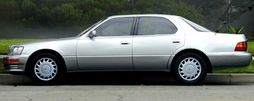
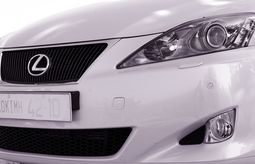
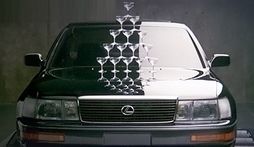
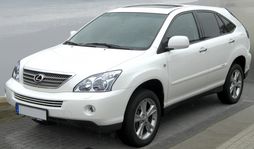
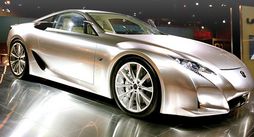
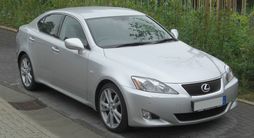



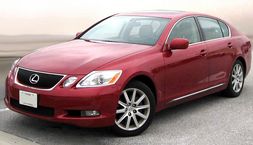
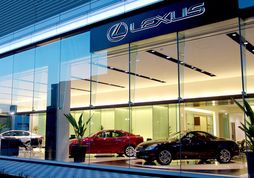
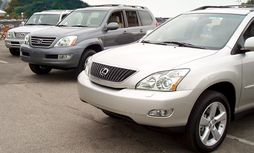
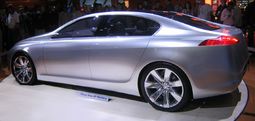

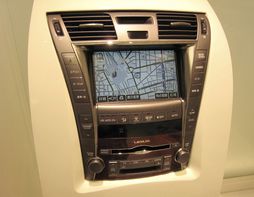
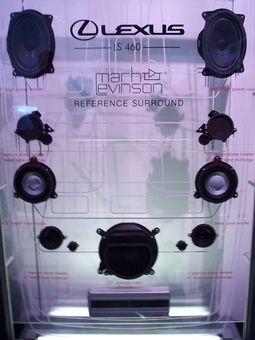

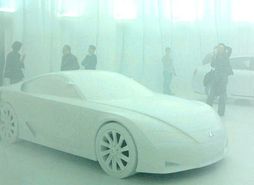
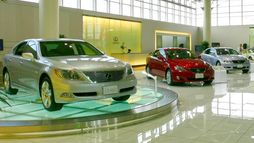
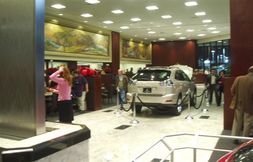

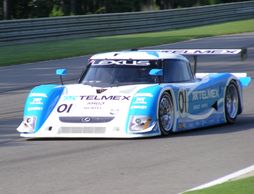
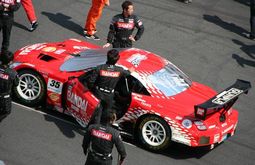
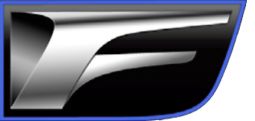
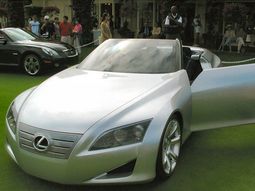

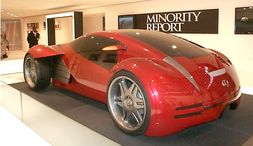
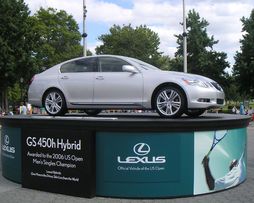
|